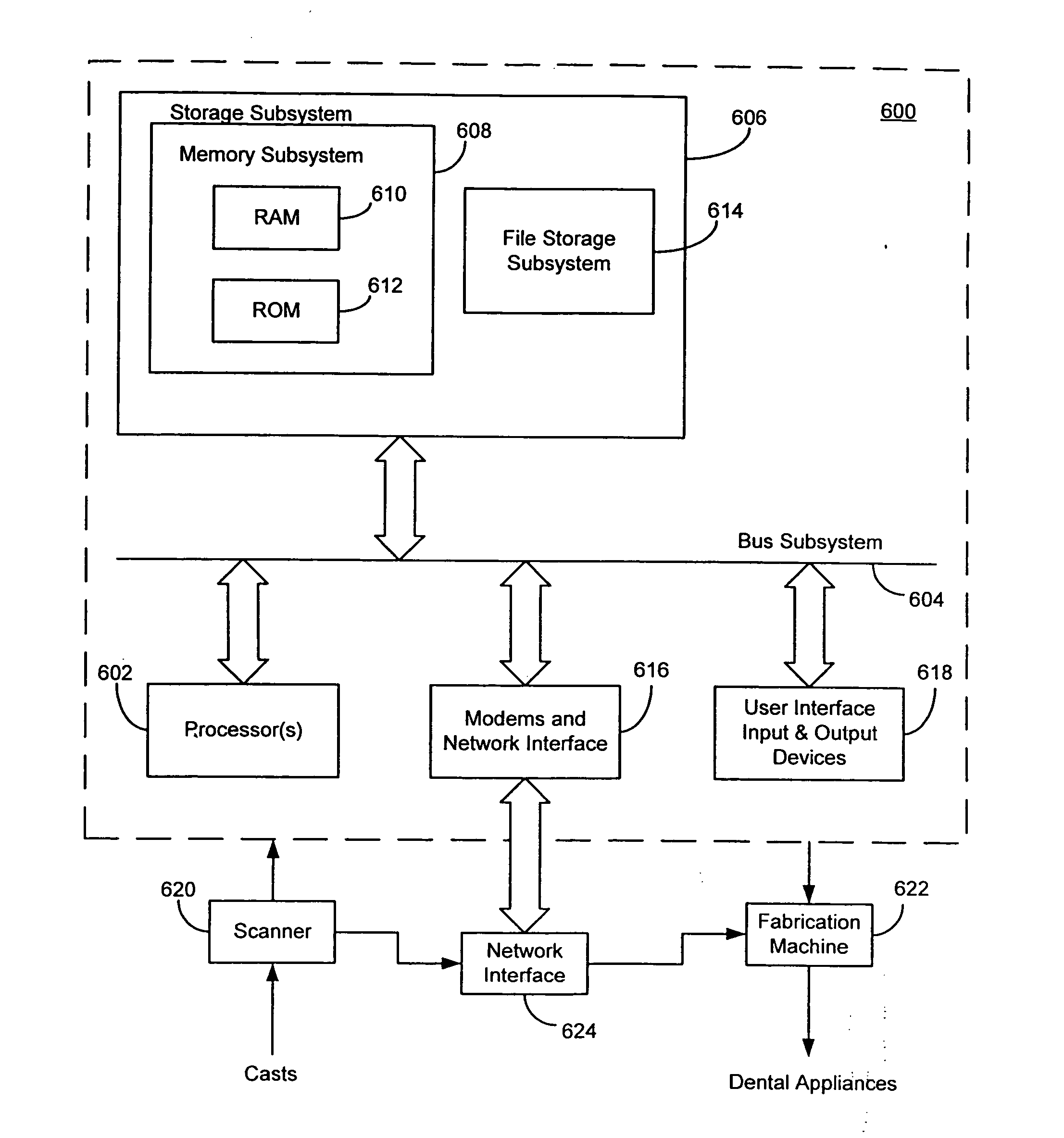Systems and methods for positioning teeth
a system and tooth technology, applied in the field of orthodontics, can solve the problems of reducing the “chair-time” available, tedious and painful process of attaching braces to teeth,
- Summary
- Abstract
- Description
- Claims
- Application Information
AI Technical Summary
Benefits of technology
Problems solved by technology
Method used
Image
Examples
Embodiment Construction
[0031] FIG.1 shows a skull 10 with an upper jaw bone 22 and a lower jaw bone 20. The lower jaw bone 20 hinges at a joint 30 to the skull 10. The joint 30 is called a temporal mandibular joint (TMJ). The upper jaw bone 22 is associated with an upper jaw 101, while the lower jaw bone 20 is associated with a lower jaw 100. A computer model of the jaws 100 and 101 is generated in accordance with the process of FIG. 3, and a computer simulation can model interactions among the teeth on the jaws 100 and 101. The computer simulation allows the system to focus on motions involving contacts between teeth mounted on the jaws. The computer simulation allows the system to render realistic jaw movements that are physically correct when the jaws 100 and 101 contact each other. Further, the model can be used to simulate jaw movements including protrusive motions, lateral motions, and “tooth guided” motions where the path of the lower jaw 100 is guided by teeth contacts rather than by anatomical li...
PUM
 Login to View More
Login to View More Abstract
Description
Claims
Application Information
 Login to View More
Login to View More - R&D
- Intellectual Property
- Life Sciences
- Materials
- Tech Scout
- Unparalleled Data Quality
- Higher Quality Content
- 60% Fewer Hallucinations
Browse by: Latest US Patents, China's latest patents, Technical Efficacy Thesaurus, Application Domain, Technology Topic, Popular Technical Reports.
© 2025 PatSnap. All rights reserved.Legal|Privacy policy|Modern Slavery Act Transparency Statement|Sitemap|About US| Contact US: help@patsnap.com



